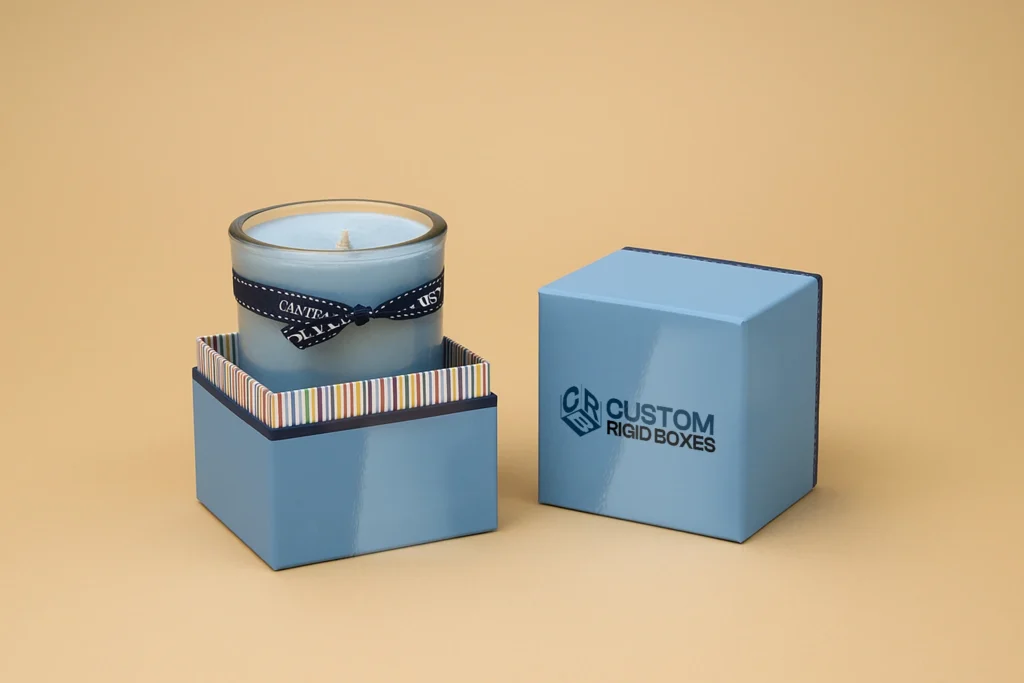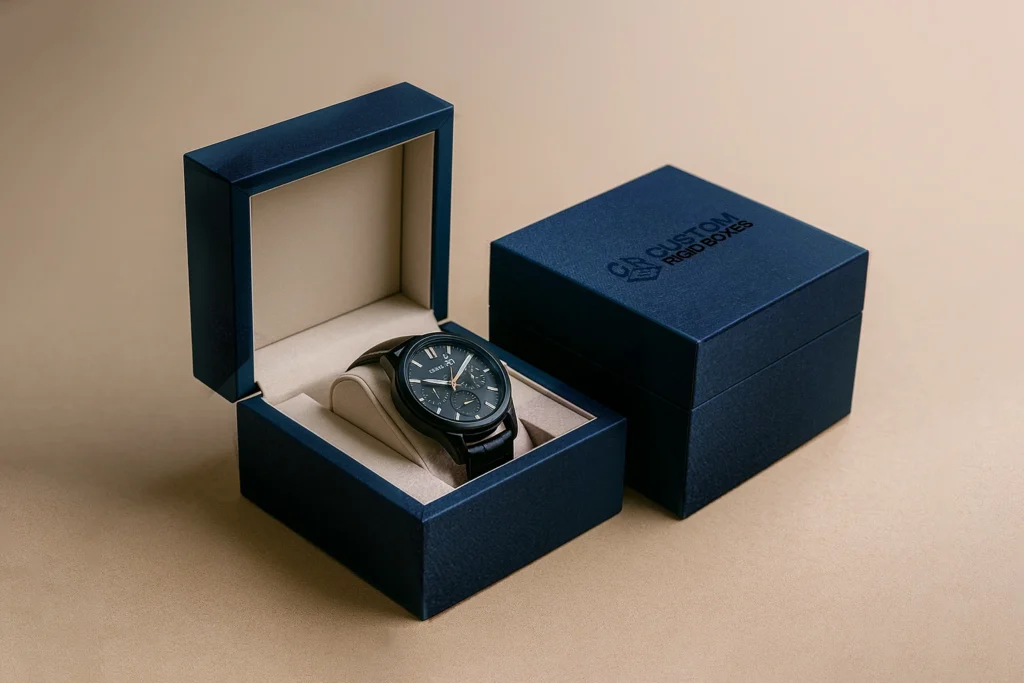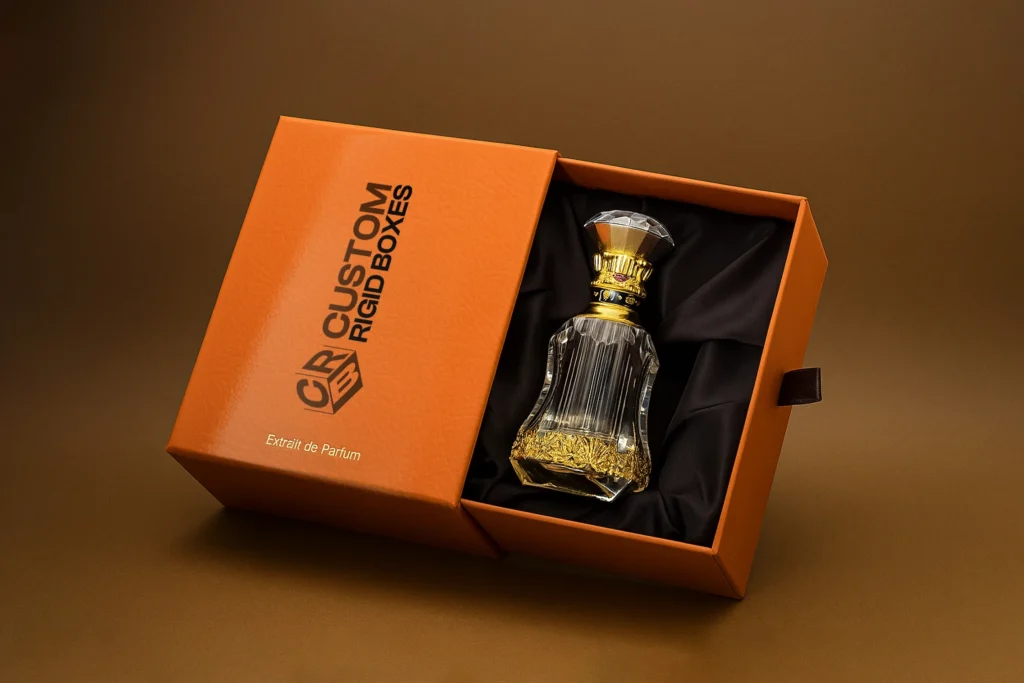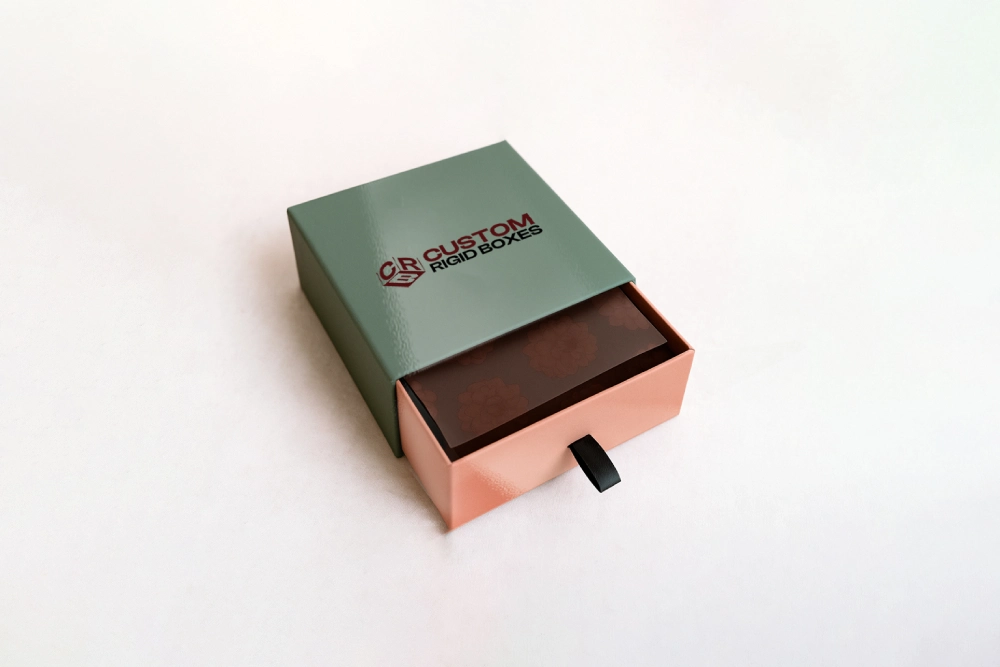Varnish is the best option to make your product packaging or printed materials stand out. This technique adds depth to the colors or a subtle appearance that reflects your brand’s image.
Whether you’re offering the food & beverage items, cosmetics, perfumes, or luxury goods, varnishing your packaging is the way to go. So, what exactly is varnish, its types, and what are the purposes of applying this coating option? Let’s get to know further!
What Is Varnish Coating?
In brief, varnish coating is a clear liquid finish applied to printed surfaces to protect them and improve their appearance. It’s typically added after the ink has dried and can have a glossy, matte, or satin texture.
Moreover, this coating can be applied to the entire surface (flood coating) or only to specific areas (spot varnish) to highlight a business logo, images, or text.
Is Varnish the Same as Laminating?
No, varnish and laminating are not the same, although both are used to protect printed materials. Varnish is ideal for short-term use or when a subtle finish is desired. On the other hand, laminating can be better for long-term durability and moisture resistance.
To gain a better understanding, check out the table below.
| Feature | Varnish | Lamination |
| Design | It creates subtle design elements | Applied across the entire surface of the printed material |
| Aesthetic | Visually appealing and offers aesthetic beauty | Mostly adds a protective layer |
| Sustainable | Most varnishes are environmentally friendly | Some processes of laminations release toxic chemicals to the environment |
| Cost | Cost-effective | More expensive |
What Is the Purpose of Varnishing?
Varnish coating serves multiple purposes in packaging and printing, including:
- Protection: Shields the surface from scratches, smudges, and fingerprints.
- Visual appeal: Enhances colors and adds texture for a premium look.
- Branding: Highlights key design elements, such as logos or product names.
- Functionality: Reduces ink rub-off and improves handling during shipping or display.
In short, this technique will enhance the appearance and durability of your printed materials.
The Process of Varnishing
The varnishing process is relatively seamless, although it involves several steps.
- Design Preparation
The first step is to decide which areas of your custom packaging boxes that will receive varnish, whether some parts or the entire surface.
- Printing
Next, the artwork you choose will be printed on your packaging.
- Drying
Once the printing is complete, you must wait and allow the ink to dry.
- Varnish Application
The varnish coating will then be applied using a coating machine or a printing press.
- Curing
Using the UV light or heat, the varnish will be dried and set.
Overall, the entire process is quick and cost-effective. Hence, this coating technique is suitable for custom packaging and promotional materials.
Types of Varnish for Packaging & Printing
There are different types of varnish coatings used in packaging and printing. Each type of varnish has unique properties that can impact the appearance and protection of your packaging.
Here are the popular varnishes you should consider.
Gloss Varnish

This is the most preferred varnish for high-end packaging, such as rigid boxes. Why?
As the name suggests, the gloss varnish can create a high-gloss finish that enhances the overall aesthetic of the packaging.
Yes, this method can make the colors of your product packaging appear more vibrant, while also giving it a luxurious, premium feel. The best part? Gloss varnish will protect your packaging from damage, including scratches and scuffs. Thus, it’s the best option if you need to send your products a long distance.
Plus, you can apply it to various packaging applications, from food and beverage packaging to rigid candle boxes and electronic packaging.
Matte Varnish

This option is ideal for packaging designs that require a softer, subtle appearance, as it creates contrast and depth. Moreover, matte varnish provides a protective barrier to your packaging, too, making it less vulnerable to scratches, smudges, and other types of damage.
Another great benefit is that matte varnish can reduce glare and reflections. This will be very helpful in grabbing the attention of customers towards your product. For example, a matte varnish will be ideal for presenting your branded watch in elegant watch boxes.
Soft-Touch / Satin Varnish

By its name, this type can give your packaging a sleek, soft texture when your customer touches it. Soft-touch varnish is highly popular for creating a tactile sensation that engages the customer’s senses and delivers memorable unboxing moments.
In addition to its aesthetic benefits, soft-touch varnish provides a protective layer to the packaging, making it more resistant to scratches and other types of damage. Therefore, this technique is widely used in luxury packaging, such as custom perfume boxes and jewelry boxes.
Varnish Coating: Pros & Cons
Of course, there are always two sides to the coin, and the same goes for varnish coating.
Here’s a quick look at the advantages and disadvantages of varnish coating:
Pros:
- Enhances visual appeal
- Protects against wear and tear
- Affordable finishing option
- Quick drying and easy to apply
- Available in multiple finishes
Cons:
- Less durable than lamination
- May not protect against moisture
- Can yellow over time if not UV-cured
- Limited tactile effects compared to specialty finishes
Wrapping Up
Well, now we know that varnish is the best option to make your product packaging or printed materials stand out. This technique involves applying a clear liquid finish to printed surfaces to protect them and improve their appearance. It’s typically added after the ink has dried and can have a glossy, matte, or satin texture.
Moreover, this coating can be applied to the entire surface (flood coating) or only to specific areas (spot varnish) to highlight a business logo, images, or text.
Varnish coating serves multiple purposes in packaging and printing, including protection, visual appeal, branding, and functionality. Some of the popular varnishes to consider are gloss varnish, matte varnish, and soft-touch/satin varnish.
So, if you’re interested in applying the innovative varnish coating to your custom packaging, you can rely on the experts at Custom Rigid Boxes.
FAQs
What is varnish coating?
A varnish coating is a clear liquid finish applied to printed surfaces to protect them and enhance their appearance. This coating can be applied to the entire surface (flood coating) or only to specific areas (spot varnish) to highlight a business logo, images, or text.
What is the purpose of varnishing?
Varnish coating serves multiple purposes in packaging and printing, including protection, visual appeal, branding, and functionality.
What are the types of varnish coatings?
The popular varnishes to consider are gloss varnish, matte varnish, and soft-touch/satin varnish.
What are the benefits of applying the varnish technique to custom packaging?
The varnish technique can enhance visual appeal, protect against wear and tear, be an affordable finishing option, be quick-drying and easy to apply, and be available in multiple types.



